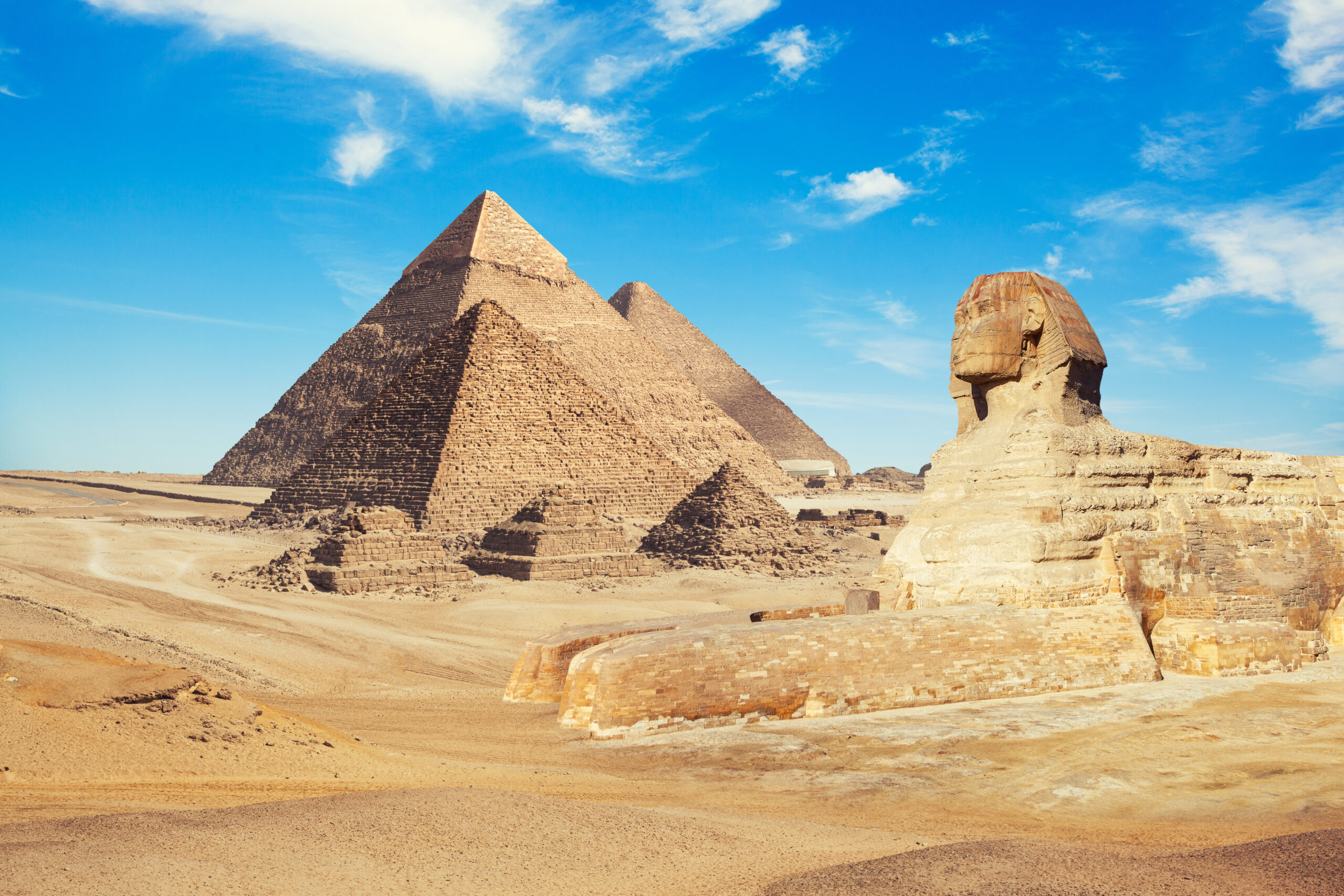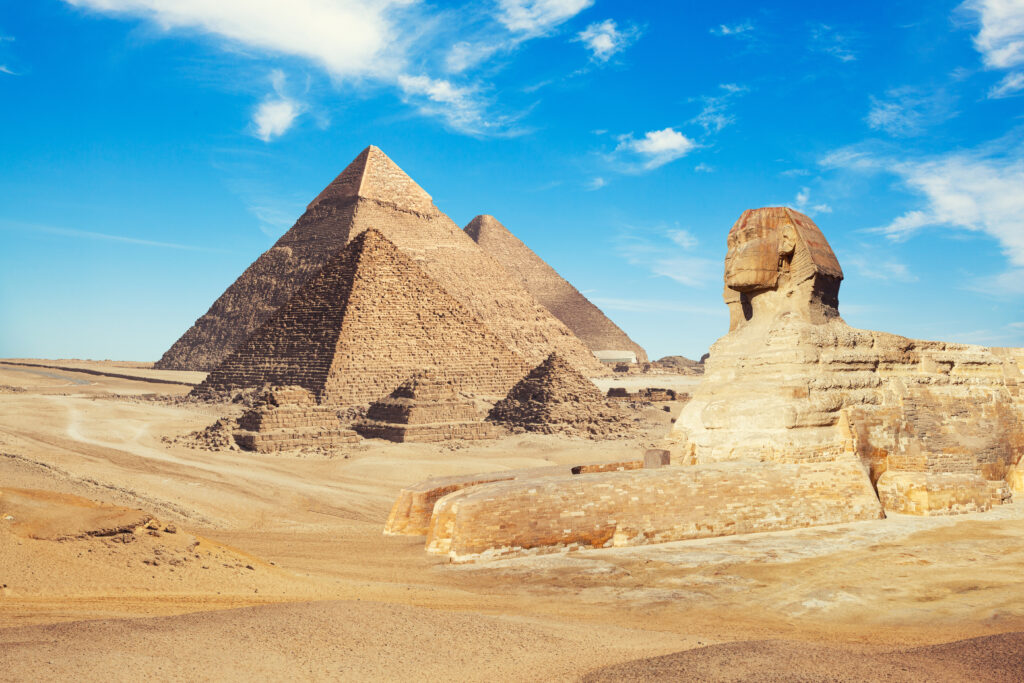Ancient Egypt was truly a civilization wrapped in an enigma that still captivates our interest to this day. We can’t get enough of mummies, hieroglyphics and mummies! So, without further ado, let’s check out some of its most fascinating aspects.

The Pyramids of Giza
The Pyramids of Giza, eternal resting places of pharaohs, are marvels of architectural skill and precision. Constructed over 4,500 years ago, these structures were erected without modern machinery, which emphasizes the ancient Egyptians’ ingenuity. The Great Pyramid, in particular, was the tallest man-made structure for over 3,800 years, highlighting its unprecedented scale and ambition.
Hieroglyphs: The Written Language
Hieroglyphs were not just art; they were a complex written language that combined logographic and alphabetic elements. Each symbol could represent a sound, a word, or even a concept, used primarily for religious texts and government records. This script was so intricate that it remained a mystery until the Rosetta Stone was discovered, providing the key to its translation.
Mummification: Preserving Eternity
Mummification in Egypt was more than just preserving the body; it was a sacred process ensuring the deceased a safe journey and immortality. Special techniques and rituals were employed to halt decay, involving the removal of internal organs and the body being wrapped in linens—a practice reflecting deep religious significance and beliefs about the afterlife.
Pharaohs: More Than Just Rulers
Pharaohs were considered divine deities, not merely rulers of their people. They were seen as earthly embodiments of the gods, responsible for maintaining harmony and order. This divine kingship necessitated elaborate ceremonies and grandiose tombs to secure their place in the cosmos, both in this life and beyond.
The Role of the Nile River
The Nile was the lifeline of Egypt, providing a fertile strip in the middle of the desert. This river’s predictable flooding ensured rich soil for growing crops, supporting the population and allowing civilization to flourish. The Nile also served as a crucial transportation route, fostering trade and communication across regions.
The Sphinx: Guardian of Giza
The Great Sphinx of Giza, with its lion’s body and human head, is a legendary figure believed to protect the Giza plateau. Its mysterious origins and purpose continue to intrigue researchers and tourists alike. The Sphinx symbolizes strength, wisdom, and perhaps the pharaoh’s divine power, overseeing the sacred sites.
Cats in Ancient Culture
Cats were revered in ancient Egypt, often depicted in family portraits and believed to bring good luck. They were associated with the goddess Bastet, symbolizing protection, fertility, and motherhood. The killing of a cat, even accidentally, could result in severe penalties, underscoring their spiritual significance.
Egyptian Gods and Goddesses
The pantheon of Egyptian deities was vast and varied, influencing nearly every aspect of life and the afterlife. Gods and goddesses like Osiris, Isis, and Anubis were not just worshiped; they were part of daily life, integrated into rituals and represented in amulets that offered protection and power.
Medicine and Surgery
Ancient Egyptians were pioneers in medicine, using sophisticated practices that included surgery. They utilized honey for its antibacterial properties and had a vast pharmacopeia derived from their natural surroundings. The Edwin Smith Papyrus shows evidence of surgical procedures, proving their advanced medical knowledge.
The Calendar System
Their calendar system, crucial for predicting the Nile’s flooding, was incredibly accurate. Based on the lunar and solar cycles, it helped schedule agricultural and religious activities, fundamentally supporting their structured society and complex administrative tasks.
Obelisks and Their Meanings
Obelisks, towering monuments of stone, were not just architectural feats but also held religious significance. They were typically placed at temple entrances, believed to harbor a petrified ray of the sun-god Ra, linking them directly to the divine.
Beauty and Cosmetics
Makeup in ancient Egypt went beyond aesthetic appeal—it protected against the harsh sun and warded off eye infections. Both men and women adorned themselves with cosmetics made from minerals, showcasing a society that valued both appearance and health.
The Book of the Dead
This wasn’t a single book but a collection of spells intended to guide the deceased through the underworld. It ensured the dead were well-prepared for the trials they would face, illustrating the Egyptians’ complex beliefs about mortality and the afterlife.
Education and Scribes
Scribes held a pivotal role in Egypt, tasked with recording history and administrative details. Education was therefore essential, albeit reserved for the elite, as literacy was a gatekeeper of societal status and power within the bureaucratic and religious hierarchies.
Festivals and Celebrations
Festivals were central to Egyptian life, often linked to agricultural cycles and religious observances. They allowed common people to rest and celebrate, enjoying music, food, and games, showing a society that valued joy and community alongside its more structured facets.







